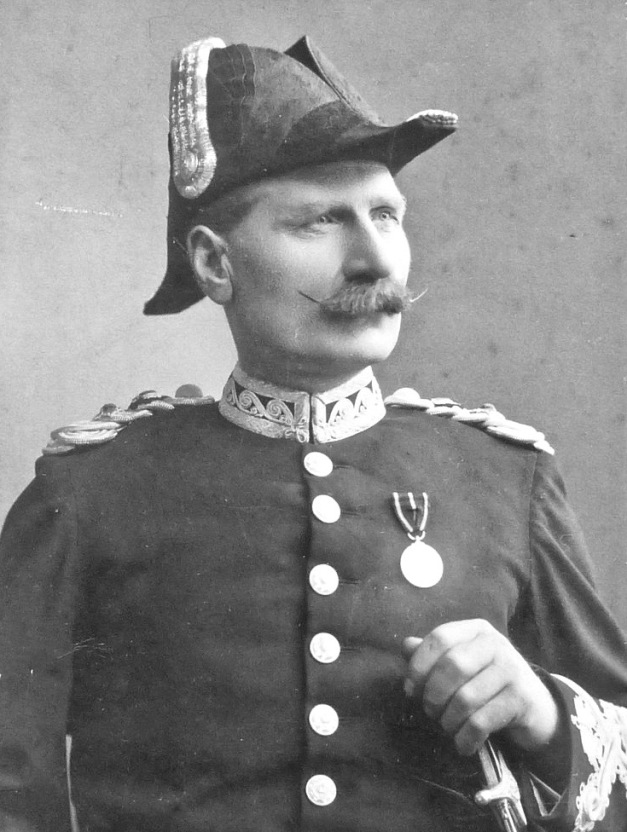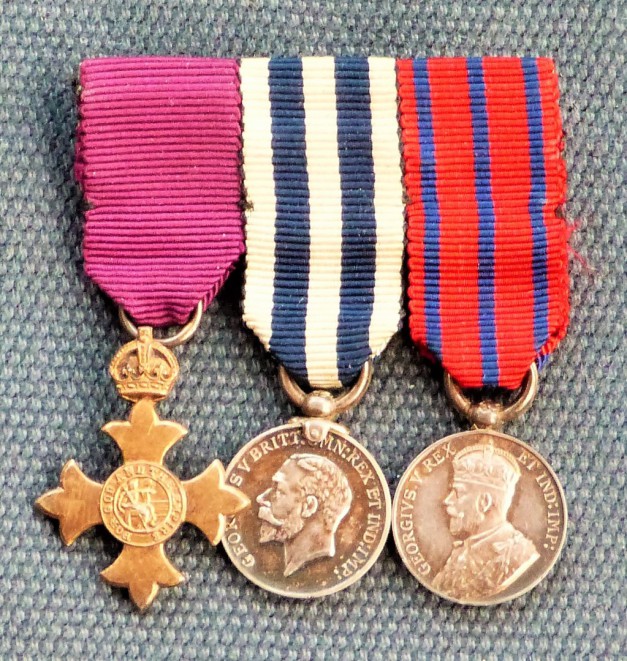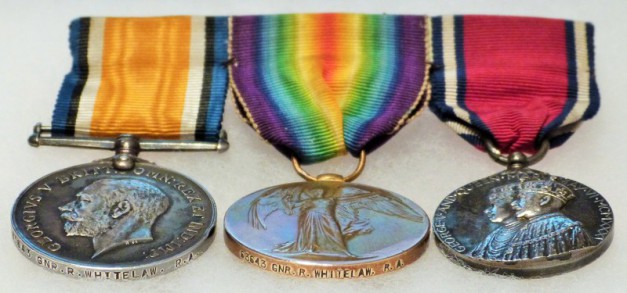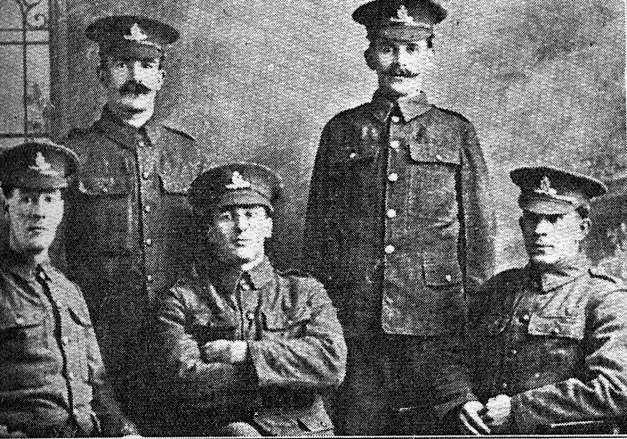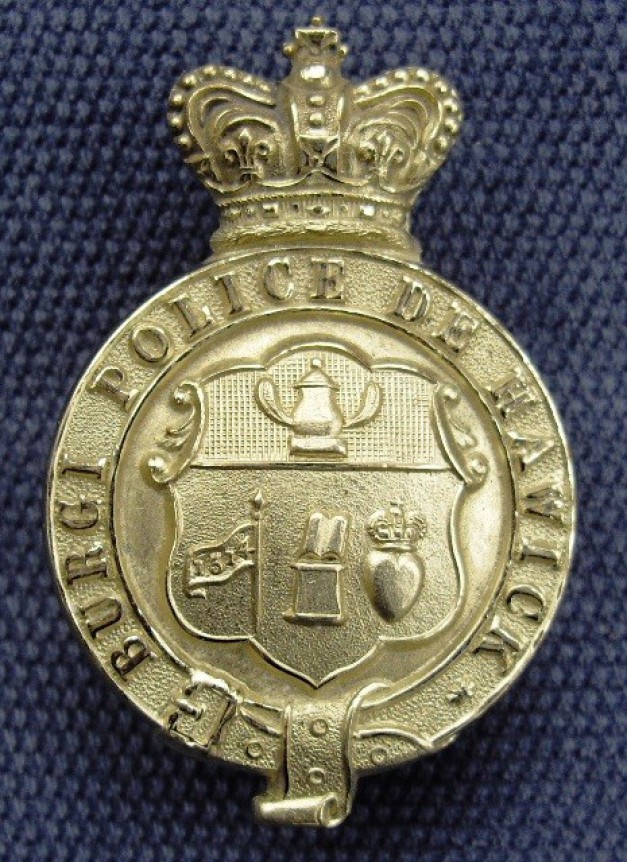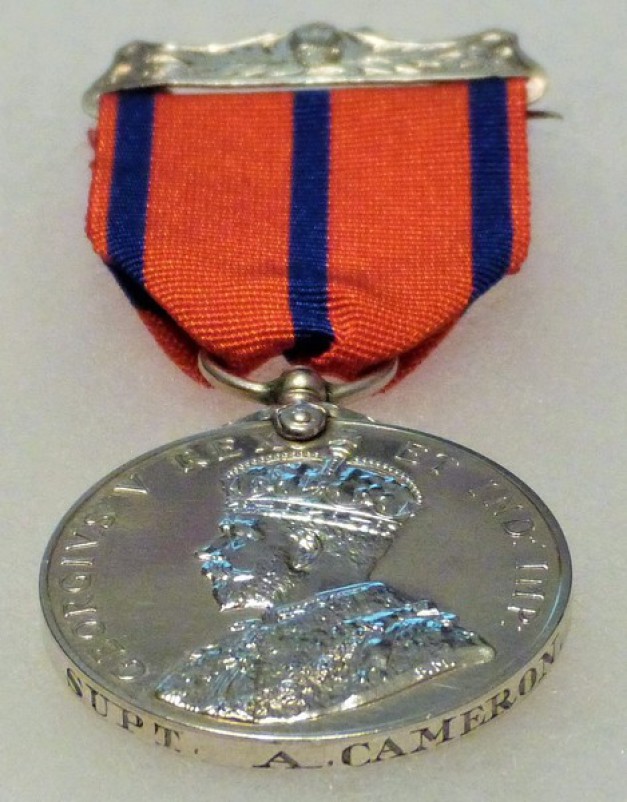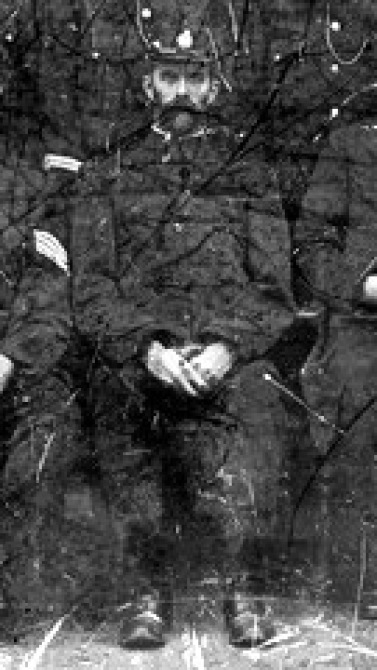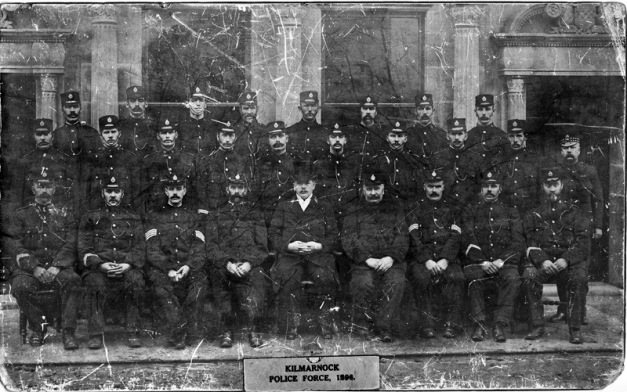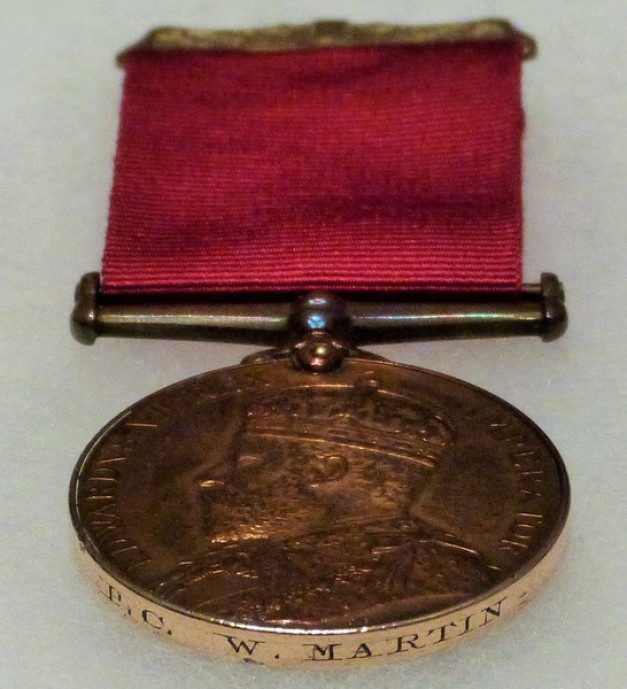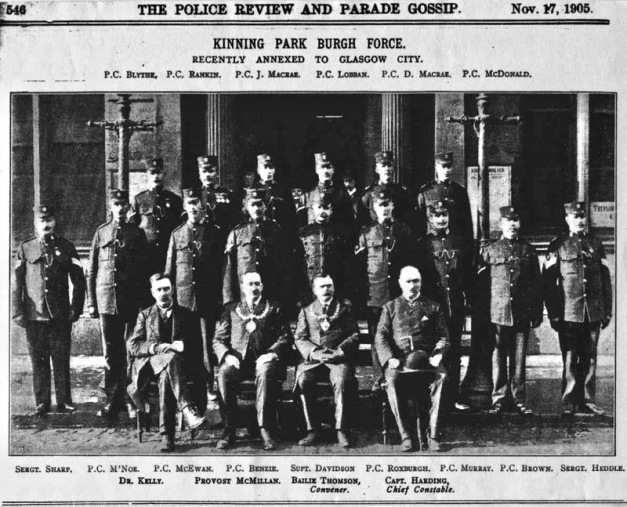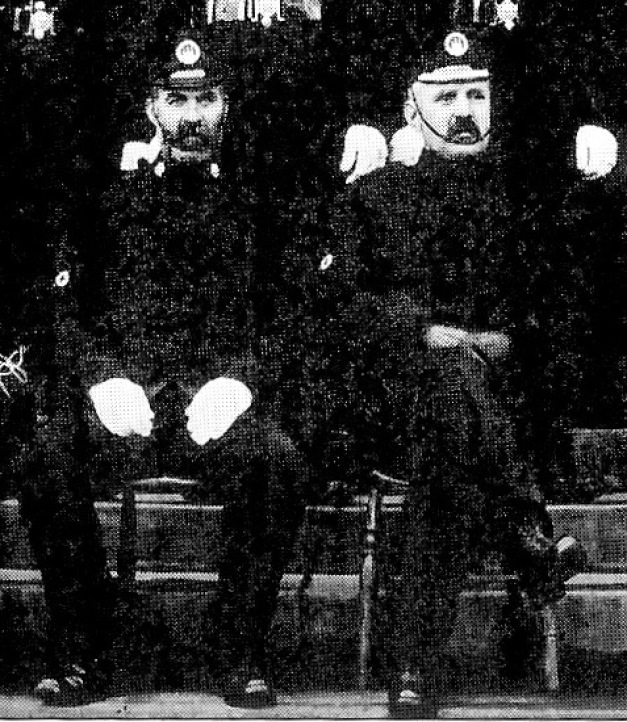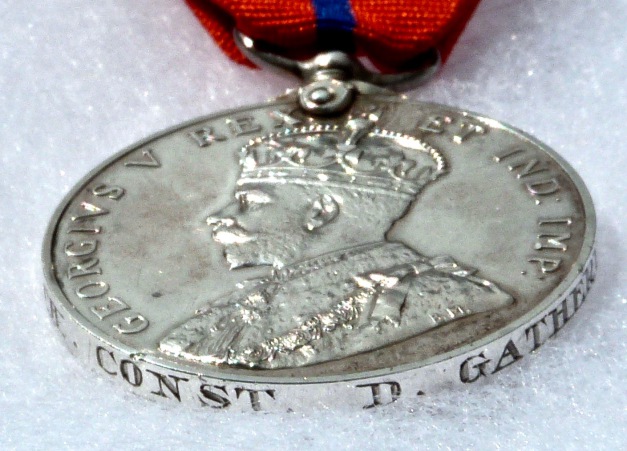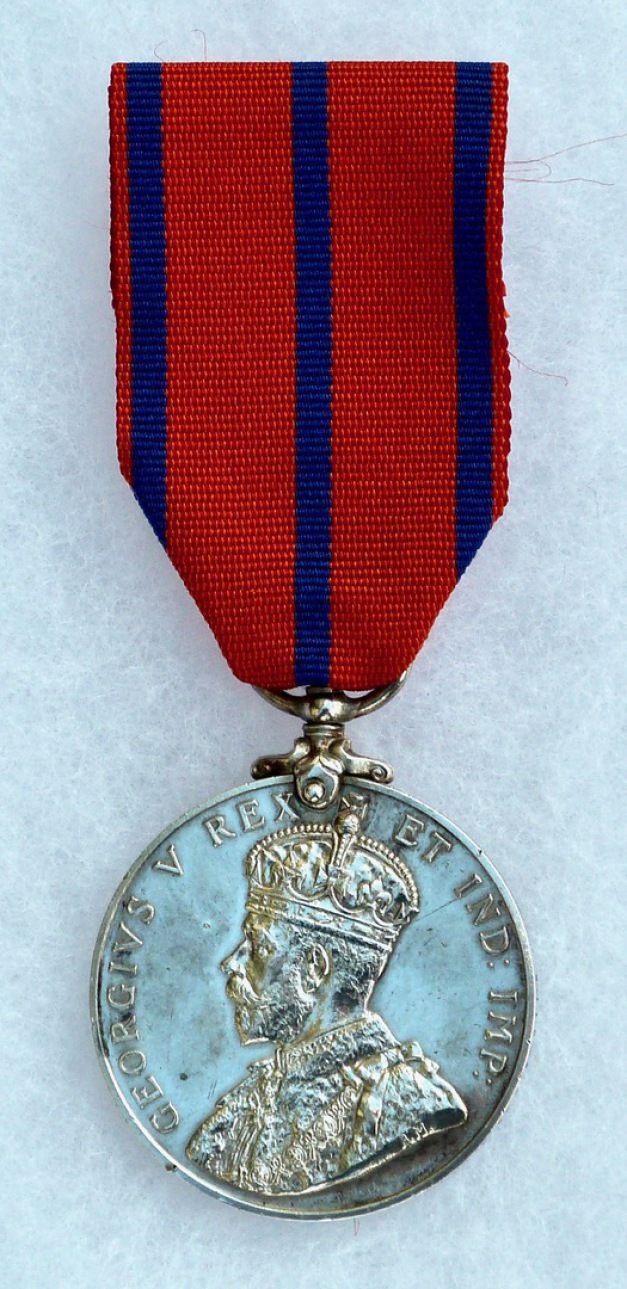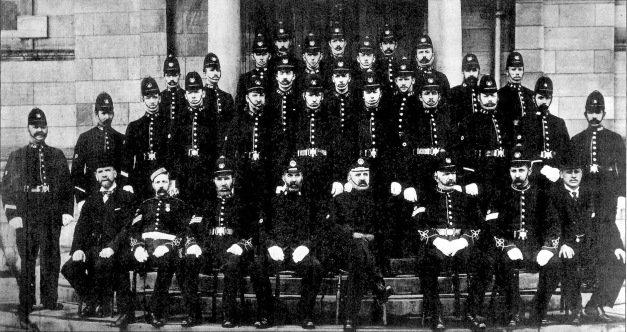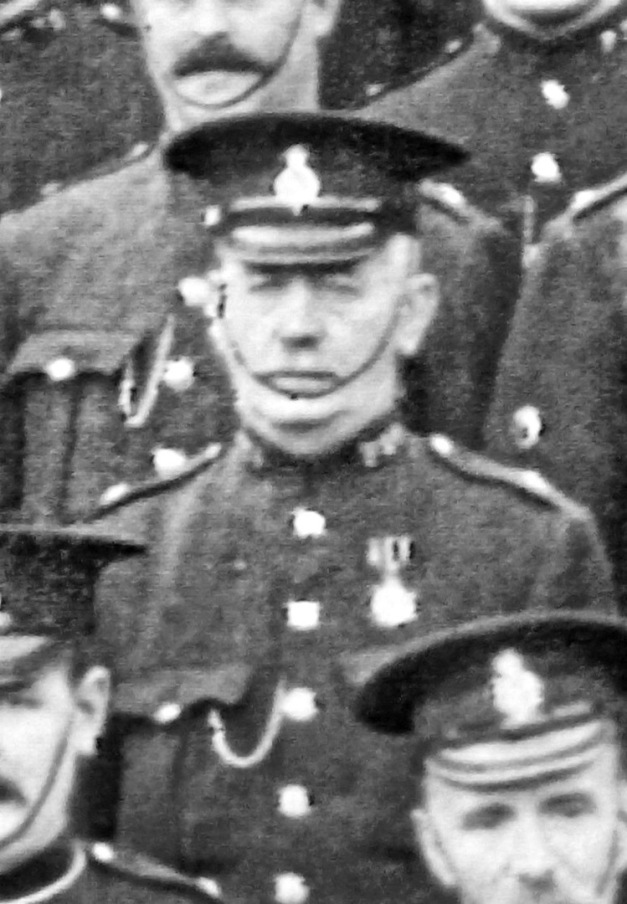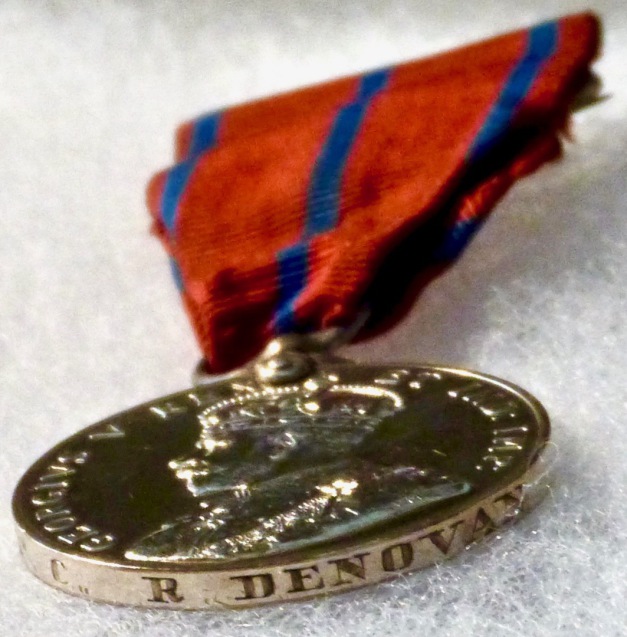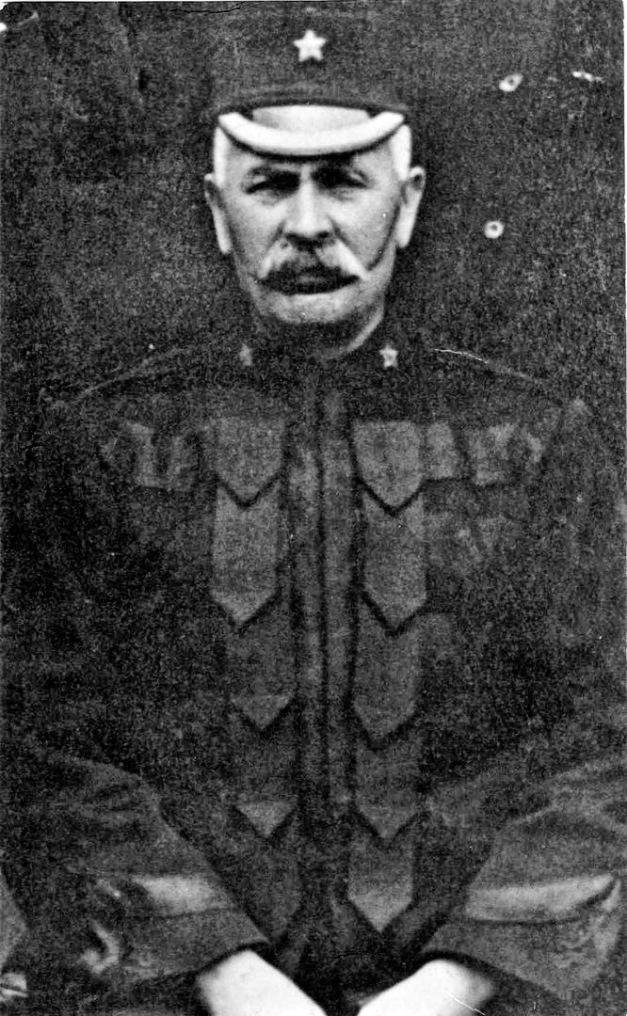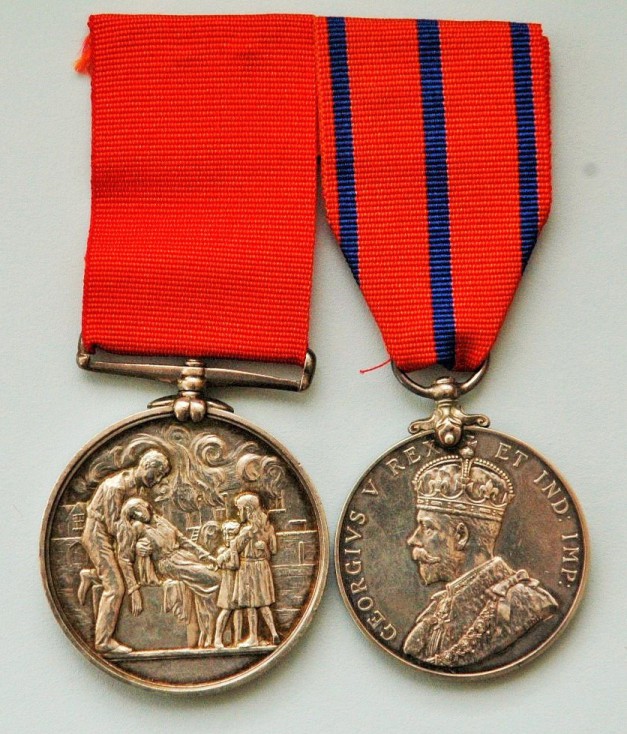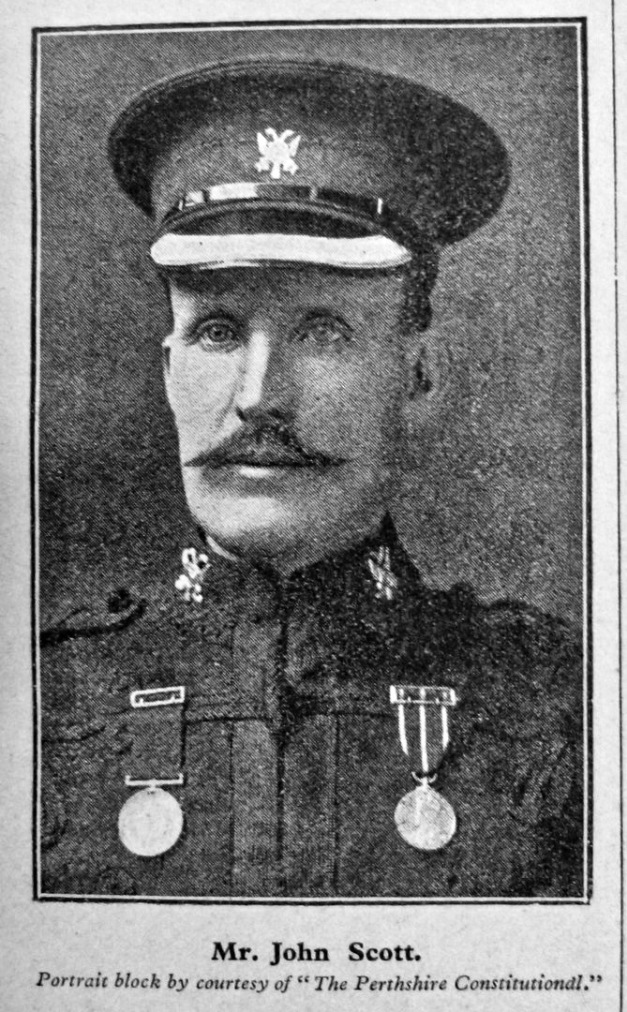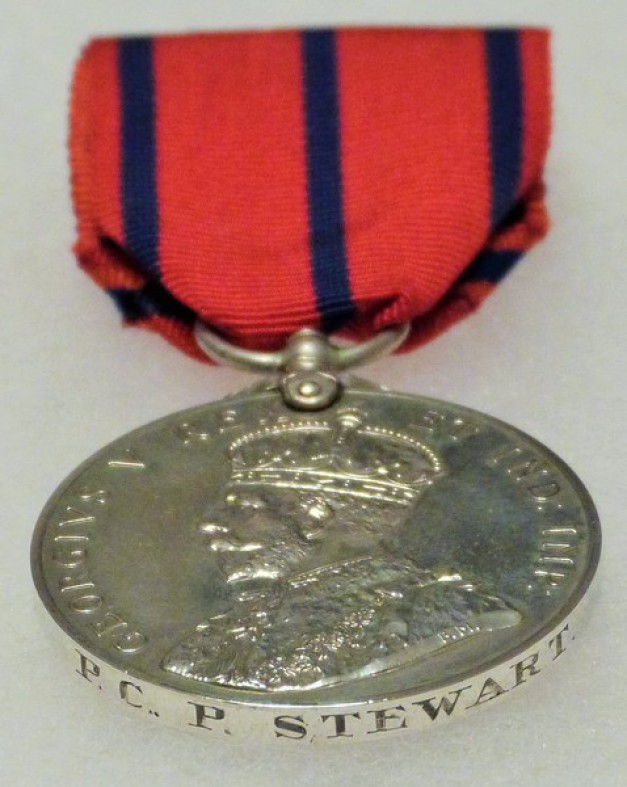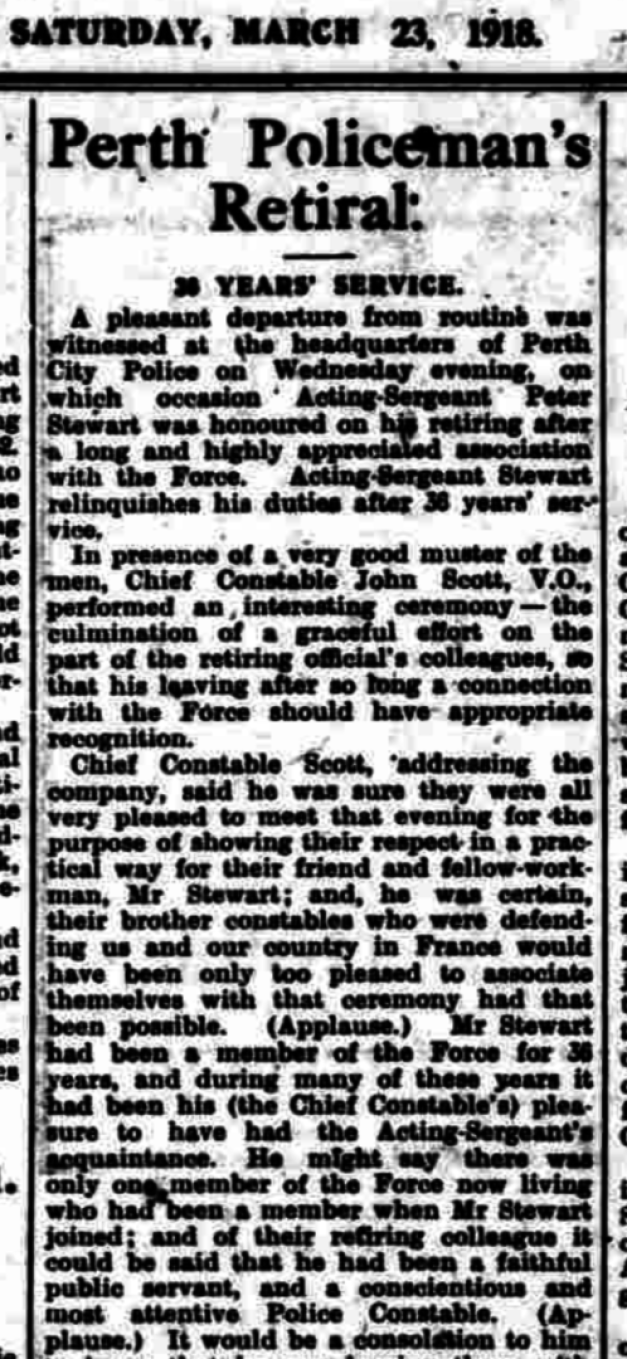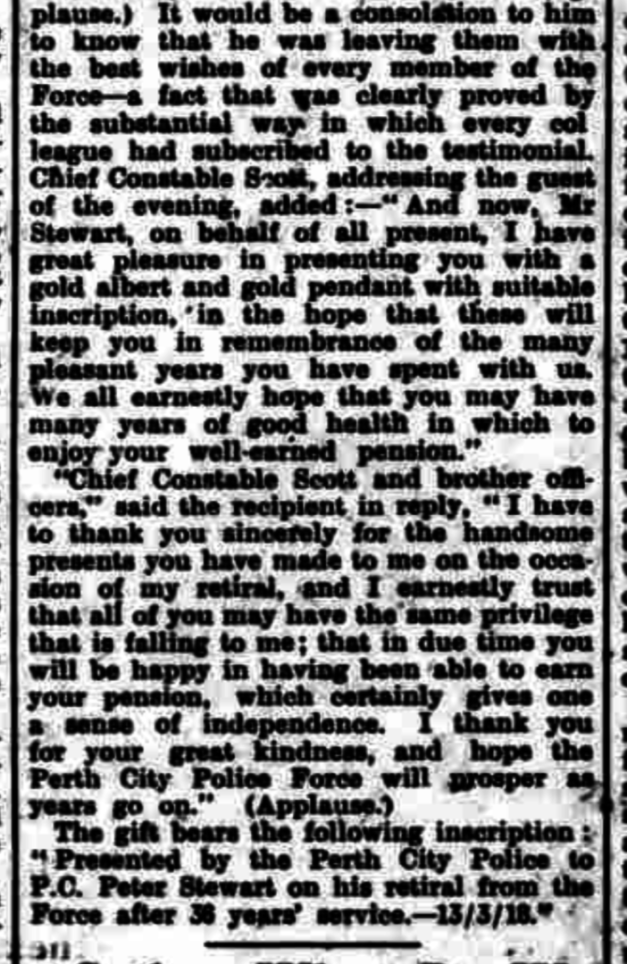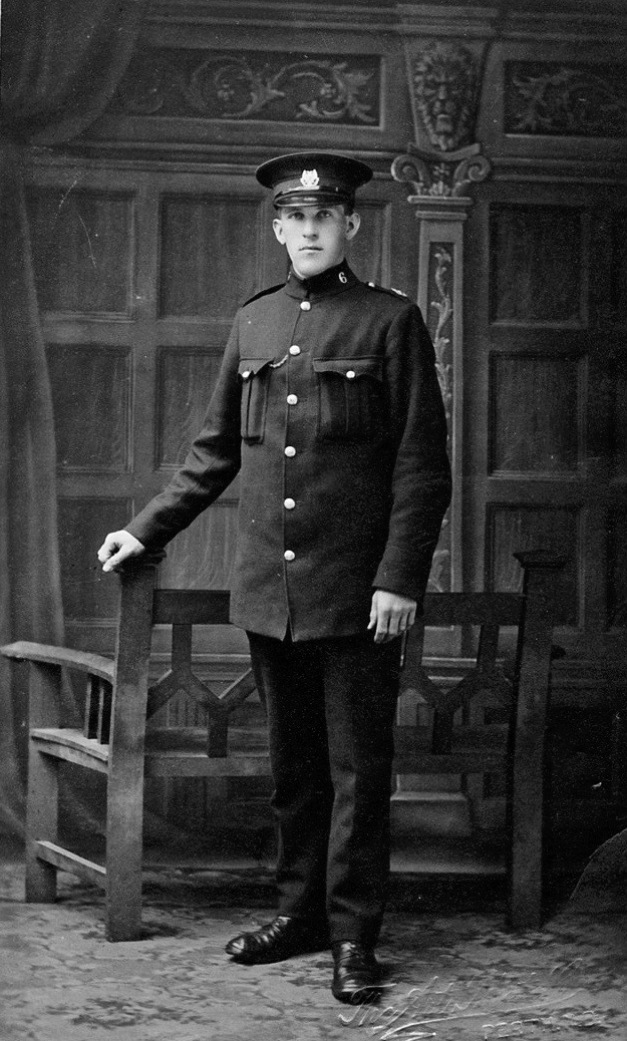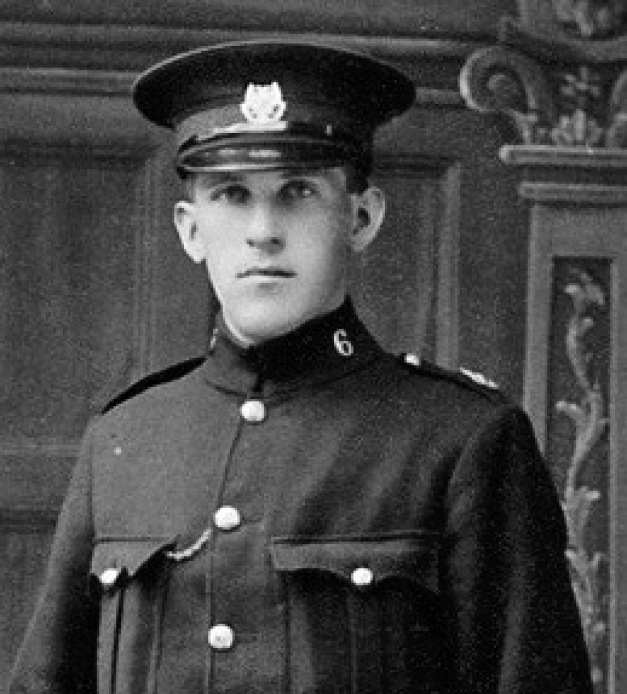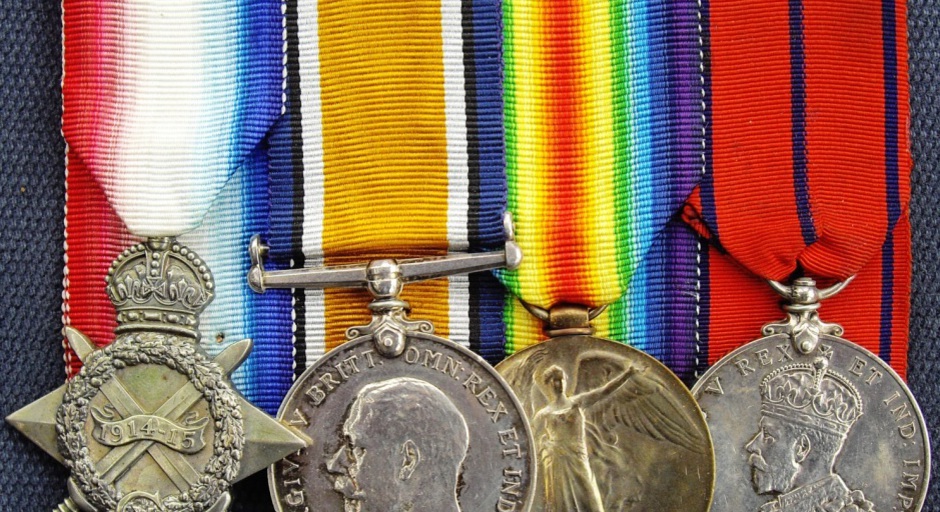
Scottish City & Burgh Police Force Medals (Hamilton to Stirling)
|
Scottish City & Burgh Police Forces
(13 July 1900) "The Police Review and Parade Gossip" Page 333)
|
|||
|
Aberdeen
|
Dumfries
|
Hamilton
|
Paisley
|
|
Airdrie
|
Dundee
|
Hawick
|
Partick
|
|
Alloa
|
Dunfermline
|
Inverness
|
Perth
|
|
Arbroath
|
Edinburgh
|
Johnstone
|
Renfrew
|
|
Ayr
|
Forfar
|
Kilmarnock
|
Rothesay
|
|
Brechin
|
Galashiels
|
Kirkcaldy
|
Stirling
|
|
Broughty Ferry
|
Glasgow
|
Kinning Park
|
|
|
Coatbridge
|
Govan
|
Leith
|
|
|
Dumbarton
|
Greenock
|
Montrose
|
|
This is the list of Scottish City and Burgh Police Forces published in The Police Review and Parade Gossip of 13 July 1900.
Hawick Burgh Police 1840 - 1930
Aberdeen City Police 1883 - 1902
Hawick Burgh Police 1902 -1909
Berwick Roxburgh & Selkirk Constabularies From 1909 - 1933
Order of the British Empire (1924)
King’s Police Medal (1924)
King George V Coronation (Scottish Police) Medal 1911
Chief Constable John Morren OBE KPM
The Early Years
John Morren was born at Auchindoir in the County of Aberdeen on 10 May 1863. His father was David Morren, a Farmer and his mother, Margaret Booth or Morren. His parents were married at Clatt in Aberdeenshire on 7 June 1860.
The couple’s first child was William Morren who in the Census of 1861, was 10 months old. His father was 32 and his mother, 31.
By the Census of 1871, the family were still living at Cairnmore in the Parish of Auchindoir and consisted of David, (42), Margaret, (41), William, (10), John, (7), Jane M, (3) and David, (1). Also listed was a ‘General Servant’ called Jane McIntosh, (15).
On 10 December 1881 at Cairnanhill School near Fyvie in Aberdeenshire, John Morren, a Farm Servant, (19), married Agnes Smith, a Domestic Servant, (23) after “Banns and Certification according to the Forms of the Church of Scotland”.
On 14 December 1882, at Hatton of Millden, Belhelvie in Aberdeenshire, Bella Allan Morren was born. Her father, John Morren, a Farm Servant, registered her birth.
Aberdeen City Police
John Morren, (20), a ‘Farm Overseer’ joined Aberdeen City Police on 3 April 1883.
Register of Births in the District of St Nicholas in the Burgh of Aberdeen, 1883
John Morren was born on 6 October 1883 at 31 King’s Crescent, Aberdeen. His father was John Morren, a Constable in ‘(Aberdeen) City Police’ and his mother, Agnes Smith or Morren. His father registered his birth.
Promotion to Sergeant
John Morren was promoted to the rank of 2ndClass Police Sergeant on 2 January 1890.
Register of Births in the District of St Nicholas in the Burgh of Aberdeen, 1890
William Booth Rennie Morren was born on 3 July 1890 at 53 Jasmine Terrace, Aberdeen. His father was John Morren, a Sergeant in ‘(Aberdeen) City Police’ and his mother, Agnes Smith or Morren. His father registered his birth.
His paternal grandmother’s maiden surname was Booth and his maternal grandmother’s surname was Rennie.
Register of Deaths in the District of St Nicholas in the Burgh of Aberdeen, 1890
John Morren, (7) died on 1 November 1890 in the Royal Infirmary, Aberdeen ten days after he was involved in a Tram Car accident in the City. His father, John Morren, a Sergeant in ‘City Police’ registered his death.
Promotion to Inspector
On 29 January 1891, John Morren was promoted to ‘2nd Class Detective Officer’.
Census of Scotland 1891
The following were listed living at 53 Jasmine Terrace, Aberdeen on the night of the Census of Scotland, 1891:
|
Name & Age |
Occupation |
Place & County of Birth |
|
John Morren, (27) |
Police Officer (Detective) |
Auchindoir, Aberdeenshire |
|
Agnes Morren, (31) |
|
Fyvie, Aberdeenshire |
|
Bella A Morren, (9) |
Scholar |
Belhelvie, Aberdeenshire |
|
William B R Morren, (9 months) |
Scholar |
Aberdeen, Aberdeenshire |
Promotion to Lieutenant
On 27 May 1891, he was promoted to ‘2nd Class Lieutenant’.
Valuation Roll Aberdeen 1895 - 96
On the Valuation Roll for Aberdeen for 1895, John Morren was a Lieutenant of Police and the Proprietor of two houses in Clifton Road, ‘Hazelbank’ at number 79 and number 81 which was let to a tenant.
Register of Births in the District of Woodside in the County of Aberdeen, 1898
David Arthur Morren was born on 8 March 1899 at 79 Clifton Road, Woodside, Aberdeenshire. His father was John Morren, Lieutenant Police and he also registered the Death.
Register of Deaths in the District of Woodside in the County of Aberdeen, 1898
David Arthur Morren died on 21 June 1898 at 79 Clifton Road, Woodside, Aberdeenshire. His father was John Morren, Lieutenant Police and he also registered the birth.
Promotion to Superintendent
Between June 1898 and April, 1901, John Morren was promoted to the rank of Superintendent of Police.
Census of Scotland 1901
The following were listed living at 81 Clifton Road, Aberdeen on the night of the Census of Scotland, 1901:
|
Name & Age |
Occupation |
Place & County of Birth |
|
John Morren, (37) |
Police Superintendent |
Auchindoir, Aberdeenshire |
|
Agnes Morren, (40) |
|
Fyvie, Aberdeenshire |
|
Bella A. Morren, (19) |
|
Belhelvie, Aberdeenshire |
|
William B R Morren, (10) |
Scholar |
Aberdeen, Aberdeenshire |
Appointment as Chief Constable of the Burgh of Hawick
Superintendent John Morren was appointed Chief Constable of Hawick Burgh Police on 9 August 1902.
Register of Marriages in the District of St Nicholas in the Burgh of Aberdeen, 1904
On 24 September 1904, at the Palace Hotel in Union Street, Aberdeen, Alexander Dow, (30), a Police Sergeant, married Bella Allan Morren, (22), a Spinster, after Banns according to the Forms of the Established Church of Scotland.
Valuation Roll Aberdeen 1905 - 06
In the Valuation Roll for the Burgh of Hawick in 1905, Chief Constable John Morren is shown living at Glenview, 2 Orchard Terrace in Hawick.
Register of Births in the District of St Nicholas in the Burgh of Aberdeen, 1905
On 9 July 1905, Alexander John Dow was born at 67 Albury Road in Aberdeen. His mother was Bella Allan Morren or Dow and his father, Police Sergeant Alexander Dow registered his birth.
Register of Births in the District of St Nicholas in the Burgh of Aberdeen, 1908
On 9 September 1908, John Morren Dow was born at 67 Albury Road in Aberdeen. His father registered his birth.
Appointment as Chief Constable of the Counties of Roxburgh, Berwick and Selkirk
On 16 November 1909, John Morren was appointed Chief Constable of the separate forces of Berwickshire, Roxburghshire and Selkirkshire Constabularies.
The Aberdeen Journal of Monday 4 October 1909 reported under the heading: “Chief Constableship of Roxburgh, Berwick and Selkirk - Aberdeenshire Man Appointed;
“Many in Aberdeen and throughout the county will be pleased to hear the Mr John Morren, Chief Constable of Hawick has been selected to fill the important office of Chief Constable of the counties of Roxburgh, Berwick and Selkirk.
Mr Morren who is a native of Auchindoir, Aberdeenshire was Superintendent of the Aberdeen City Police previous to securing his appointment in Hawick”.
Having joined the Aberdeen City force in 1883, Mr Morren, by his good conduct, perseverance and diligence, passed rapidly through the various grades of the service, discharging the respective duties with commendable discretion and ability.
When in Aberdeen, he acted as Licensing Officer under the Contagious Diseases (Animals) Acts for both the city and the county; he carried out with conspicuous success the duties of Honorary Secretary of the Police Athletic Club and devoted a considerable amount of his spare time to the training and physical development of the men.
In ambulance work, Mr Morren took a keen interest, and was awarded the association’s bronze medallion…
In June 1902, Mr Morren was appointed Chief Constable of Hawick and was subsequently given the positions of Depute Burgh Prosecutor, Fire Master and Billet Master. He also holds the office of Inspector for the Burgh under the Weights and Measures Acts, Food and Drugs Act, Explosives and Petroleum Acts, Poison and Pharmacy Act, Contagious Diseases (Animals) Acts and Sheep Dipping Orders.
Since going to Hawick, Mr Morren started the Police Benevolent Fund, which has proved of great assistance to the deserving poor.
He has been successful in closing all bogus drinking clubs in the town and abolishing street betting.
Mr Morren has proved himself a zealous, capable and conscientious official, and his promotion is recognised as being exceedingly well deserved.”
Award of King George V Coronation (Scottish Police) Medal, 1911
As Chief Constable of Roxburghshire, he was awarded the King George V Coronation (Scottish Police) Medal, 1911. His miniature medals can be seen below.
Award of King’s Police Medal (KPM) for Distinguished Service, 1924
John Morren, Chief Constable of the Counties of Roxburgh, Berwick and Selkirk was awarded the King’s Police Medal in the supplement to the London Gazette published on 1 January 1924.
Award of Order of the British Empire (OBE), 1924
Later that year, the Berwickshire Advertiser of 5 June 1924 reported(Underneath a picture of John Morren):
“John Morren, Chief Constable of Roxburgh, Berwick and Selkirk who becomes an Officer of the Order of the British Empire, holds the most important police appointment in the South of Scotland.
He has a long record of constabulary service and is a prominent personality in Scottish police circles.
During Their Majesties’ informal visits to the Borders last year, Mr Morren was responsible for the arrangements of the tour which was carried through in a highly satisfactory manner. For his services then, he was awarded the King’s Police Medal.”
Retirement as Chief Constable of Roxburgh, Berwick and Selkirk Counties, 1933
John Morren retired as Chief Constable of the three forces on 16 May 1933.
Register of Deaths in the Burgh of Aberdeen, 1942
Agnes Smith or Morren, (86), died in 35 Rubislaw Park Crescent in Aberdeen on 10 April 1942. Her son-in-law, Alexander Dow, registered her death.
Register of Deaths in the Burgh of Aberdeen, 1950
John Morren OBE KPM died in Aberdeen on 4 August 1950.
Hawick Burgh Police 1840 - 1930
British War Medal
Victory Medal
King George V Jubilee Medal 1935
Hawick Burgh Police
Roxburghshire Constabulary
PS Robert Whitelaw
Robert Whitelaw was born in Ednam in the County of Roxburgh on 21 July 1885. He was the second youngest of three boys and three girls.
His family moved around the farms of Roxburgh when his father, a Ploughman, obtained new employment. By 1902, the family were living at Smailholm, Roxburghshire and Robert (Senior) was still a Ploughman while his son, now 15, was a Carter.
Robert Whitelaw joined Hawick Burgh Police on 14 August 1906.
In the Census of 1911, he was living with his mother and father at 15 Mansefield Crescent, Hawick. He was 25 and a Police Constable. Living with her parents and family at 17 Mansefield Crescent is Sarah Hodgson, (24), a Woollen Hosiery Sewer.
Robert Whitelaw was a PC in Hawick Burgh Police when he joined the Army in WW1 and served in the Royal Garrison Artillery as Gunner 63643.. He served in France in the 14th (Z) Trench Mortar Battery, Royal Garrison artillery.
He survived the war and was awarded the British War Medal and the Victory Medal. This is confirmed in his Medal Index Card (MIC). I have not found any other Army record for him but this is not unusual since so many were destroyed in enemy bombing of London in World War 2.
On 28 March 1919, Robert Whitelaw, (33), a Police Constable of 5 Mansefield Square, Hawick married Sarah Hodgson, (32) a Hosiery Seamer of 17 Mansefield Crescent, Hawick. They were married at 41 High Street, Hawick after Banns according to the Forms of the United Free Church of Scotland.
Robina McBurnie Whitelaw and her sister Margaret Stewart Whitelaw were born on 3 January 1920 at 5 Mansefield Square, Hawick.
Robert Whitelaw was promoted to Sergeant in Hawick Burgh Police on 13 June 1924.
In 1930, Hawick Burgh Police amalgamated into Roxburghshire Constabulary.
PS Whitelaw was awarded the King George V Jubilee Medal in 1935 and this is confirmed in the Medal Roll (under Section 6. Scot.Cy. Rox).
Robert Whitelaw retired from Roxburghshire Constabulary on 26 October 1936 on an annual pension of £196.00.
On 11 January 1967, Robert Whitelaw, (81), a Police Sergeant (Retired), died at 8 Rosevale Street, Hawick. His son-in-law registered the death the next day.
Sarah Hodgson or Whitelaw died in Hawick in 1975 aged 88.
Kilmarnock Burgh Police 1846 - 1968
King George V Coronation (Scottish Police) Medal 1911
Kilmarnock Burgh Police
Chief Constable Angus Cameron
Angus Cameron was born in Laggan, Inverness-shire on 12 August 1854.
Before he joined Ayrshire Constabulary on 9 June, 1876, he was a Carter. His description on joining was 6’ tall, brown hair, blue eyes and a sallow complexion.
He served in Ayrshire until 24 July 1879 when he was appointed Detective Sergeant in Kilmarnock Burgh Police.
In the Census of 1881, he was a ‘Sergeant of Police’, 27 years old and living as a ‘Boarder’ at 11 Woodstock Place, Kilmarnock.
On 2 July 1884, while living at 66 Hill Street, Kilmarnock, still a Sergeant of Police and aged 31, he married Robina Turner, 30, a Shopkeeper of 11 North Hamilton Street, Kilmarnock.
During their marriage which lasted 38 years, they had four daughters and one son together:
|
Name |
Year of Birth |
|
Janet Hopkins Cameron |
1884 |
|
Jane Mackintosh Cameron |
1886 |
|
Lewis Cameron |
1887 |
|
Robina Turner Cameron |
1889 |
|
Louisa Badenoch Cameron |
1892 |
On 9 December 1886 he was promoted to Lieutenant “after Lieutenant Anderson resigned”.
In 1891, he was unsuccessful in an application to become Chief Constable of Eginshire.
On 30 October 1894, he was promoted to Superintendent and Deputy Chief Constable.
By the Census of 1901, he and Robina were living at 45 Glebe Road, Kilmarnock with their four daughters, their son Lewis having died in 1889.
On 14 December, 1910 he was appointed Chief Constable of Kilmarnock Burgh Police “at a commencing salary of £200 per annum”.
Angus Cameron’s ‘Profession or Occupation’ is given as ‘Chief Constable’ in the 1911 Census the following year.
The 1911 Census was controversial in that it was the first time that details of live births and children still living were recorded. From a researcher’s point of view, the information is invaluable. The 1911 Census confirms that Angus and Robina had been married for 26 years, had five children together, four of whom were still alive on that date.
Between 1914 and 1920, Angus Cameron’s salary was increased on five occasions to reach £550 per annum on 16 December 1920.
According to ‘The Scotsman’ newspaper edition of Saturday October 15 1921:
|
Resignation of Kilmarnock Chief Constable
Mr Angus Cameron, Chief Constable of the Burgh of Kilmarnock, has resigned his position for health reasons. He has 45 years’ police service – 42 in Kilmarnock – and has held office as Chief Constable for the last eleven years.
|
Angus Cameron retired on Pension on 1 November, 1921.
On 10 April 1922, Angus Cameron, (67), Chief Constable (Retired), married to Robina Turner of 7 Glebe Avenue, Kilmarnock, died at home. His daughter ‘Jeanette’ Cameron registered his death two days later.
In the Aberdeen Daily Journal of Wednesday 12 April, 1922, the following Obituary appeared:
"FORMER CHIEF CONSTABLE. - Mr Angus Cameron, formerly Chief Constable of the Burgh of Kilmarnock, died at his residence, Glebe Avenue, Kilmarnock, on Monday.
A native of Inverness-shire, he went to Ayrshire as a young man and joined the County Constabulary, transferring in a few years to the Kilmarnock force.
He acted as Lieutenant for many years and was appointed Chief Constable in 1910, in succession to the late Mr John Campbell.
He was a Past-Master of St Marnock's Masonic Lodge, No. 109 and had held office in the Grand Lodge of Scotland".
Robina Turner or Cameron, widow of Angus Cameron, Chief Constable (Retired), (84), died on 16 June 1938 at Daisy Bank, Countess Street, Darvel, Ayrshire. Her son-in-law, David Lammie, registered her death the next day.
The man who succeeded Angus Cameron as Chief Constable, Mr Charles Roy, is described below, courtesy of the 'Police Review and Parade Gossip' of 11 November, 1921.
Kinning Park Burgh Police 1892 - 1905
King Edward VII Police (Scotland) Medal 1903
Kinning Park Burgh Police
Renfrewshire Constabulary
PC William Martin
William Martin was born in Portree in the Isle of Skye on 15 November, 1878.
On 21 December, 1896, he enlisted in the Queen’s Own Cameron Highlanders at Inverness. He served in Gibraltar, Egypt and South Africa.
He took part in the Nile Expedition, 1898, the Battle of Atbara and the Expedition to Khartoum and fought in the Second Boer War. He was awarded the Khedive’s Egyptian Sudan Medal with clasps “Atbara” and “Khartoum” and the Sudan Medal (Queen’s), the Queen’s South Africa Medal with clasps “Johannesburg”, “Diamond Hill”, “Wittebergen” and “Cape Colony” and the King’s South Africa Medal with the usual two clasps.
He transferred to the Army Reserve on 2 April 1903 and joined Kinning Park Burgh Police on 20 April, 1903. He resigned on 27 September 1903 to join Renfrewshire Constabulary.
He joined Renfrewshire Constabulary on 28 September, 1903 and left on resignation on 5 August 1912. His previous service is confirmed in the Renfrewshire Personnel Record. His trade or calling is given as ‘Soldier’.
His year and place of birth and personal description on his Army record matches his description on both his police records. His next-of-kin on his Army record, his mother Margaret Martin is confirmed on his Birth Certificate.
This is only medal entitlement from his police service but it would be truly amazing if it were to be re-united with his Army medals. If you know where they are, please contact me via enquiries@scottishpolicemedals.co.uk.
The only other ‘PC W. Martin’ I have found in Scotland at the time was in Fife Constabulary but he retired on pension before he qualified for the medal, although, he was called back briefly in World War I.
I know for certain that some Renfrewshire Constabulary and Kinning Park Burgh officers were awarded the 1903 medal. I have not yet seen any photographic or other record that shows Fife County Constabulary officers with the 1903 medal. Please get in touch if you know of any such evidence.
Kirkcaldy Burgh Police 1840 - 1860 and 1877 - 1949
To see medals to Leith Burgh Police 1806 - 1920, please click here
King George V Coronation (Scottish Police) Medal 1911
Partick Burgh Police
PC Robert Denovan
Robert Denovan was born on 16 November 1852 in Bannockburn in the Parish of St Ninians in the County of Stirling.
He was a Labourer before joining Partick Burgh Police on 18 November 1878.
He and his wife, Mary Ann Neilson, also from Stirling, had by 1911, been married 36 years and had ten children together, all of whom were alive that year.
According to the Resignations Register of City of Glasgow Police, Robert Denovan retired on pension under the Police (Scotland) Act, Section 1 (a) on 18 November 1912. He had completed 34 years’ service.
Robert Denovan was the only PC in Partick Burgh Police to be awarded the 1911 medal.
The others to receive the medal were the Chief Constable, William Cameron, Superintendent Charles Marshall, Inspector Garden and Police Sergeant Gunn.
Robert Denovan died aged 75 in 1185 Dumbarton Road, Glasgow on 10 October 1928. Mary Ann pre-deceased him.
I am grateful to Alastair Dinsmor of the City of Glasgow Police Museum for the images of PC Denovan and the Partick Burgh Police badge.
Perth City Police 1864 - 1964
Society for Protection of Life from Fire Silver Medal (1893)
King George V Coronation (Scottish Police) Medal 1911
Perth City police
Chief Constable James Garrow
James Garrow was born on 11 March 1853 at New Machar in the County of Aberdeen. The son of John and Jane Garrow, of Mamulah, Newmachar, he was the youngest of 6 children born to his parent’s between 1838 and 1853. His father was an Agricultural Labourer and married his wife Jane Mortimer in July 1838. They lived at Old Rayne, Aberdeen before moving to Newmachar. The 1861 Census shows James living with his older brother John and his parents still living at Mamulah, Newmachar.
The 1871 Census places James in lodgings with the Cruickshank family at Foveran and working locally as a Blacksmith. From this position he made connections that eventually resulted in him moving to Edinburgh to work in the shop of David F. Wishart, an Iron Merchant.
In 1874 he joined Lancashire Constabulary. He was describes as “21 years, 5’7” tall, blue eyes, brown hair and a fresh complexion”.
He later resigned and re-joined Lancashire Constabulary twice.
He then had a spell with Ayrshire Constabulary.
By 1881, James Garrow was married with two children and living at Erskine Street, Alloa in Clackmannanshire.
He later served a short time in East Lothian Constabulary before transferring on promotion to Inspector with Perth City Police in June, 1881
By the Census of 1891, he had re-married and was living at Pitcullen Terrace in Kinnoull in Perth.
About 1800 2 January, 1893, Inspector Garrow was in his office when a report was received of a serious fire that had broken out in an attic of a three storey tenement, at Mill Wynd, Perth.
The Inspector issued orders to turn out the part time Fire Brigade with a number of police officers, hurried to the scene.
Two elderly people were trapped on the top floor and Inspector Garrow entered the building forcing his way into one of the attic rooms were he found Donald Farquharson, a coachman, unconscious on the floor. He carried him to the street and returned to search for the other occupant who he found in an adjacent attic room also suffering from smoke inhalation. She was Mrs Mackay who was also taken to the street and with Mr Farquharson transferred to the local Infirmary where they both made full recoveries.
The building was completely destroyed by the fire. The Fire Brigade and the Brigade from the Queens Barracks under the control of Major Coode and Lieutenant Eykyn had great difficulty controlling the blaze although water was in plentiful supply.
The property was insured and damage was estimated at over £1000. The occupants of adjoining tenements were greatly alarmed and moved their furniture out of danger to the street. Without doubt, the actions of Inspector Garrow saved the lives of Mr Farquharson and Mrs Mackay.
Inspector Garrow was awarded the Silver medal of the Society for Protection of Life from Fire and presented with the medal on 20 March, 1893.
By 1901, the family were living at 16 Tay Street in Perth.
Chief Constable Garrow was awarded the King George V Coronation (Scottish Police) Medal, 1911. The only other officers in Perth City Police awarded the medal were the Deputy Chief Constable, John Scott and the longest serving Constable, Peter Stewart. PC Stewart’s medal can be seen below.
James Garrow retired on pension on 2 July, 1914. He died in Brighton on 24 December, 1933.
I am grateful to Steve Grainger for the images and the abridged biography concerning Chief Constable James Garrow.
The next picture is of Deputy Chief Constable Scott followed by the 1911 medal of PC Peter Stewart.
These were the only three King Gerge V Coronation (Scottish Police) medals, 1911 awarded to Perth City Police, the Chief Constable, his Deputy and the longest serving Police Constable.
Peter Stewart was born on 22 October 1857 at Dryburns in the Parish of Glamis in the County of Forfar.
He was a Farm Servant before joining Perth City Police on 2 March 1882. He was “6’ 1” tall, with auburn hair, hazel eyes and fresh complexion.”
Under ‘Rewards and Commendations’ in the Perth City Police Register and Defaulters Book, are the following entries:
|
Date |
Remarks |
|
15 February 1883 |
2nd Class Constable
|
|
22 November 1883 |
1st Class Constable
|
|
16 December 1886 |
1st Class Constable
|
Why had been promoted to 1st Class Constable twice? The answer is under ‘Misconduct –Neglect of Duty – Disobedience of Orders – Violation of rules of Service’ as shown below.
|
Date |
Remarks |
|
22 October 1885 |
“Found on duty in state of intoxication – Reduced to 2nd Class Constable”
|
Apart from the money, he also lost his ‘seniority. In 1885, there were 33 men in Perth City Police and Peter Stewart dropped to number 27 in the Roll, just above the 3rd Class Constables.
It may be indicative of his character that this was the only Discipline Offence recorded against him and that by 1911, he was back at the top of the Roll of 1st Class Constables and was the longest serving PC.
Peter Stewart was the only Constable in Perth City Police to be awarded the 1911 Coronation Medal and it may have been for his long and meritorious service that he was chosen.
The only others in Perth City Police awarded the medal were Chief Constable James Garrow and Deputy Chief Constable John Scott.
He retired on 13 March 1918. A report of a presentation of a gold watch and fob by his police colleagues in the Perthshire Advertiser is shown below.
Peter Stewart died on 6 December 1928 aged 71. His wife had pre-deceased him.
This is another example of a very rare medal to a long gone force that survived until 16 May 1964 when it amalgamated in to Perth and Kinross Constabulary.
Perth and Kinross Constabulary amalgamated in to Tayside Police on 16 May 1975 and ultimately became part of Police Scotland on 1 April, 2013.
To navigate around the site, please click on the links below.
To return to the Home Page, please click here.
To return to Scottish County Police Forces, please click here.
To return to Edinburgh City Police, please click here.
To return to City of Glasgow Police, please click here.
To return to the Edinburgh City Police Gallery, click here.
To return to the Leith Burgh Police Medals, click here
To return to the Forces that became Lothian and Borders Police Gallery, please click here.
To return to Medals for Sale, please click here.
